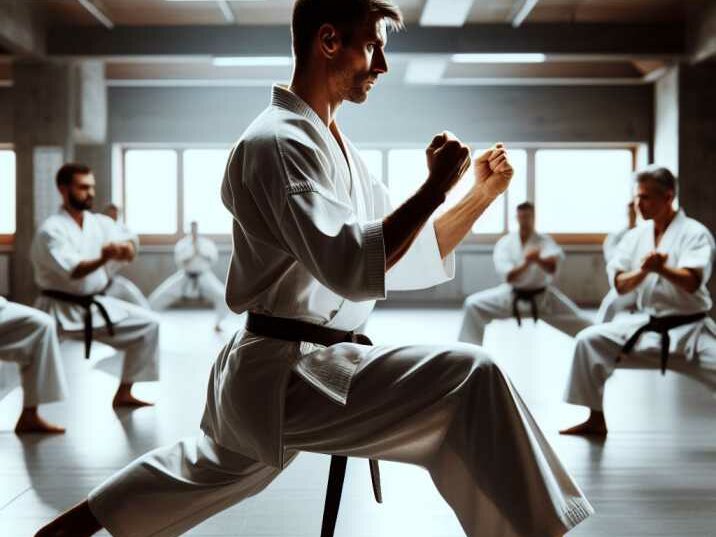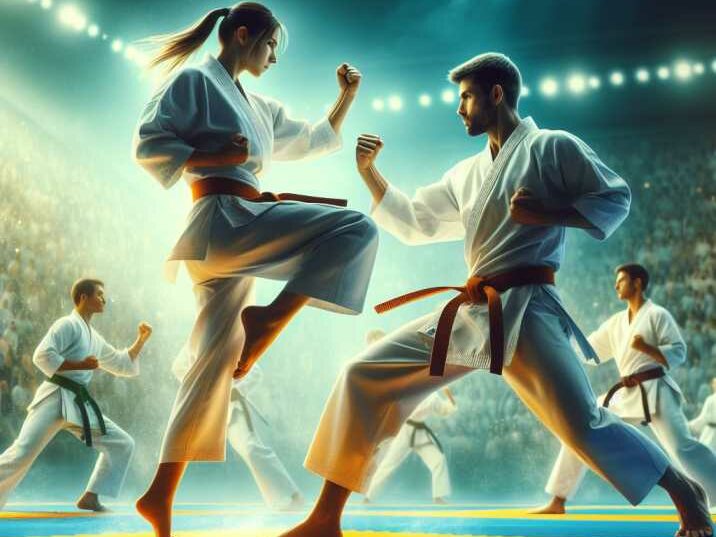Introduction:
Table of Contents
Karate, a martial art renowned for its disciplined techniques and intricate forms, holds a rich history deeply rooted in Japanese culture. Central to the practice of Karate are the Kata, or forms, which serve as the foundation of this martial art. In this article, we embark on a journey through time to unravel the origins of Karate Kata, tracing its evolution from ancient practices to its widespread popularity today.

Origins of Karate Kata:
Ancient Roots:
Karate finds its origins in the Ryukyu Kingdom, now known as Okinawa, Japan. It was in this island kingdom that the foundations of Karate were laid, blending indigenous martial arts with influences from China.
Influence of Chinese Martial Arts:
During the Ryukyu-China cultural exchanges in the 14th century, Chinese martial arts such as Kung Fu made their way to Okinawa. The integration of these techniques with local fighting styles gave rise to the precursor of Karate.
Development of Kata:
The concept of Kata began to take shape as practitioners sought to systematize and pass down their combat techniques. These forms served as mnemonic devices, enabling students to memorize and practice sequences of movements essential for self-defense.
Transition to Modern Karate:
In the late 19th and early 20th centuries, Karate underwent further refinement and standardization, particularly with the efforts of notable masters like Gichin Funakoshi. This period saw the formalization of Kata into structured forms, marking the transition of Karate from a regional martial art to a global phenomenon.
Key Elements of Karate Kata:
1. Physical Movements:
Karate Kata consists of a series of predefined movements, strikes, and blocks executed in a specific sequence. These movements simulate combat scenarios and are designed to develop balance, coordination, and strength.
2. Breathing Techniques:
Integral to Kata practice is the synchronization of breath with movement. Controlled breathing not only enhances focus and concentration but also optimizes the flow of energy, or ki, throughout the body.
3. Philosophical Principles:
Beyond the physical aspects, Karate Kata embodies philosophical principles such as discipline, respect, and perseverance. Practitioners learn to cultivate a mindset of humility and self-improvement through diligent practice.
4. Evolution and Adaptation:
While rooted in tradition, Karate Kata continues to evolve, with variations emerging across different styles and schools. This adaptability reflects the dynamic nature of martial arts and ensures its relevance in contemporary times.

Table of Information:
| Key Aspect | Description |
|---|---|
| Origins | Ryukyu Kingdom (Okinawa, Japan), Influence of Chinese Martial Arts |
| Development | Integration of Techniques, Formalization of Kata |
| Essential Elements | Physical Movements, Breathing Techniques, Philosophical Principles, Evolution and Adaptation |
Conclusion:
Karate Kata stands as a testament to the enduring legacy of this ancient martial art. From its humble beginnings in Okinawa to its global prominence today, the evolution of Karate Kata reflects the spirit of innovation and tradition that defines the essence of Karate. As practitioners continue to hone their skills through diligent practice, they uphold the legacy of their predecessors while forging new paths for the future of Karate.
FAQs (Frequently Asked Questions):
- What is the purpose of Karate Kata? Karate Kata serves as a structured framework for practicing and refining fundamental techniques essential for self-defense.
- How many Kata are there in Karate? There are numerous Kata in Karate, varying across different styles and lineages. Some styles may emphasize a select few Kata, while others may incorporate a wider range.
- Can anyone practice Karate Kata? Yes, Karate Kata can be practiced by individuals of all ages and fitness levels. It offers a holistic approach to physical fitness, mental focus, and self-defense skills.
- Are there competitions for Karate Kata? Yes, Karate tournaments often include Kata competitions where practitioners showcase their mastery of forms before judges.
- Is Karate Kata solely about self-defense? While self-defense is a primary aspect, Karate Kata also promotes personal development, character building, and a deeper understanding of martial arts philosophy.


